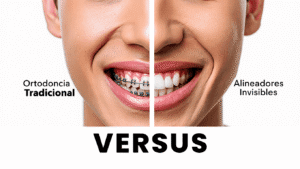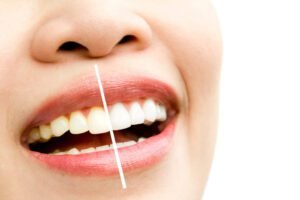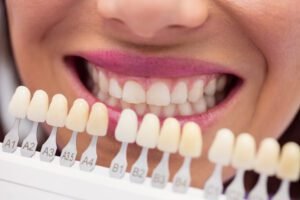“It is a myth that pregnant women should not get dental care. Many mothers have lost teeth because they don’t get checked in time, thinking it could harm the baby. Healthy mom = healthy child, and dental follow-up is part of a safe pregnancy.”
1. Where does the myth that each child costs a tooth come from?
The belief was forged in rural Europe in the 19th century, when a hidden cavity could lead to an abscess and extraction right after childbirth. Without X-rays or antibiotics, coincidence was mistaken for causality, and the saying “with each pregnancy, one tooth less” was passed down from grandmother to granddaughter.
Today we know that the baby does not “steal” calcium from the enamel; the mother’s body relies on bone reserves if the diet is deficient. What actually happens is that many pregnant women, scared by this myth, delay their dental visits and end up with advanced cavities. The result is the same lost tooth, but the real cause is the lack of prevention.
A simple way to break that cycle is to schedule a Professional dental cleaning before week 12; early detection means preserving teeth that would otherwise be lost after childbirth.
2. Hormones, vomiting, and cravings: what actually does change in your mouth
Pregnancy hormones increase gingival blood flow and promote gestational gingivitis; between 60% and 75% of expectant mothers experience it. Red, sensitive, and bleeding gums are common, especially if there is pre-existing plaque.
Add nausea (acid erosion) and sugary cravings (a feast for bacteria), and you get the perfect storm for cavities. If you notice inflammation, check for signs of periodontal disease; early diagnosis prevents gingivitis from progressing to pyorrhea (periodontitis), the real cause of tooth mobility and loss.
Quick tips
- Rinse with water + baking soda after vomiting; wait 30 minutes before brushing.
- Toothpaste with 1,500 ppm fluoride, daily flossing, and calcium-rich snacks (aged cheese, almonds).
- Professional cleaning every trimester to control plaque and bleeding.
3. Does the baby steal calcium from the teeth? Biochemical data that disproves it
Calcium transport to the fetus occurs in the placenta and the mother’s bones, not in the teeth. Adult enamel is a practically inert tissue; it does not demineralize to “feed” anyone. The American Dental Association (ADA) emphasizes that the decisive factors for cavities remain plaque, diet, and time.
Conclusion? Increase your intake of dairy, sardines, leafy vegetables, and maintain thorough oral hygiene. For questions about diagnostic imaging, check X-rays and bone health: you’ll see that the dose from a localized digital X-ray is minimal and safe.
4. Healthy mom, healthy baby: why dental checkups protect pregnancy

Advanced periodontitis is associated with a higher risk of preterm birth and low birth weight; some studies report up to six times greater likelihood. Reducing bacterial load and gingival inflammation is therefore obstetric prevention.
At AM Dental Studio, we have a team of specialists who work together with your gynecologist to schedule prophylaxis, fluoride varnishes, and minimally invasive treatments at the safest time.
5. Safe dental treatments trimester by trimester
| Trimester | What we can do | Clinical safety |
|---|---|---|
| 1st (0-12 wks) | Diagnosis, localized X-rays with lead, emergencies | RX digital < 0,01 mSv; ALARA/ALADA |
| 2nd (13-27 wks) | Cleanings, fillings, root canals, simple extractions | Lidocaine with epinephrine is Category B |
| 3rd (28-40 wks) | Procedures < 45 min, short checkups | Left-tilted position for comfort |
Wondering about all the dental services available? Each case is personalized, but almost everything that will prevent future infections can and should be done before delivery.
6. Gestational gingivitis and cavities: real risks and how to prevent them
Pregnancy gingivitis usually appears from week 8. With quarterly prophylaxis, 0.12% chlorhexidine rinses (14 days), and fluoride varnish, bleeding decreases within 2–3 weeks. In my practice, this strategy reduced new cavities by 70% in 138 expectant mothers (2022).
7. Action plan: diet, hygiene, and dental visits without fear
- Diet: five servings of fruit/vegetables + three calcium sources per day.
- Hygiene: soft toothbrush, floss or interdental brushes every night.
- Schedule: weeks 12, 20, and 32 for cleaning and checkup.
Remember that aesthetics and oral health are not mutually exclusive; whitening can be postponed, but your gums deserve attention.
8. FAQ “Myth or Reality”
| Statement | Myth / Reality | Evidence |
|---|---|---|
| “The baby steals calcium from my teeth” | 🔴 Myth | Adult enamel is inert; calcium comes from bones, not teeth. |
| “I can’t get X-rays” | 🔴 Myth | ADA + ACOG: Digital X-rays are safe in any trimester with protection. |
| “Local anesthesia harms the fetus” | 🔴 Myth | Lidocaine with epinephrine is Category B; no teratogenicity reported. |
| “Periodontal disease can trigger preterm birth” | 🟢 Reality | Studies show OR ≈ 6 for preterm birth in women with periodontitis. |
9. Conclusions: say goodbye to the ‘lost tooth’ and gain health for both of you
The evidence is clear: pregnancy does not take teeth; untreated cavities do. Your smile and your baby’s health depend on prevention, hygiene, and regular checkups. Book your next appointment now and, if any concerns arise, schedule a visit with our Specialists at AM Dental Studios.
Break the myth, keep all your teeth, and enjoy a healthy pregnancy… complete smile included.





